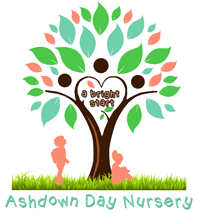Children’s learning is based on their interests
The Reggio Emilia Approach views children as capable of acquiring knowledge within themselves through their natural curiosity and creativity. The approach provides hands on discovery learning that allows the child to use all their senses. What they are and become interested in becomes an important element in their own learning process. The Reggio Emilia approach believes that children use many many different ways to show their understanding and express their thoughts and creativity. A hundred different ways of thinking, discovering, through drawing, sculpting, dance, movement, painting, pretend play, through modelling and music. Each one of these ‘Hundred languages’ must be valued and nurtured.
Teachers and parents are co-learners in the Reggio Emilia approach
Instead of leading the learning process, teachers and parents working with the Reggio Emilia approach act as collaborators in the learning process of the children. The approach encourages them to offer their knowledge and help to the children. But most of all, teachers and parents listen, observe, document and encourage children in whatever it is they are interested in doing.
The nursery environment is a “third teacher”
The Reggio Emilia approach sees the child’s surroundings as an excellent medium through which a child’s learning experience can be enriched. Thus, our environment will be open, comfortable and welcoming offering access to various learning tools for the children to explore. The nursery set up will allow for mobility and communication between peers. Group and peer communication are also a primordial aspect of the Reggio Emilia approach. Children are often involved in small and large group projects linked to their interests. This learning enables the children to develop vital skills “talk, critique, compare, negotiate and problem solve” There is an area in the nursery known as the ‘atelier’ where the children will work on arts projects. This area contains a variety of tools and resource materials along with records of past projects and experiences. The children’s use of many media is not a separate part of the curriculum, but an integral part of the whole cognitive/symbolic expression involved in the process of learning.
Children’s learning progress is documented
The focus on the environment represents the value placed on aesthetics, organisation, thoughtfulness, provocation, communication and interaction. Because the Reggio Emilia approach encourages a child’s independent learning it is crucial that the learning process is carefully documented. This in the most part will be done in a visual manner and displayed in the setting and in documentation books. We will take pictures, save children’s work (such as drawings, crafts, work of arts and transcripts of children’s thoughts). In this way, children, teachers and parents can follow the individual learning process of their child.
Teachers focus on the many ways children learn
The Reggio Emilia approach believes that children have an endless number of ways of learning. This is then reflected in the many materials, methods, instruments, activities, ideas and tools that are presented to the children. The learning tools are available to children based on their ongoing interest. It is a very hands on approach to learning and discovering. This provides an easy-going approach yet holistic approach to educating the very young.

